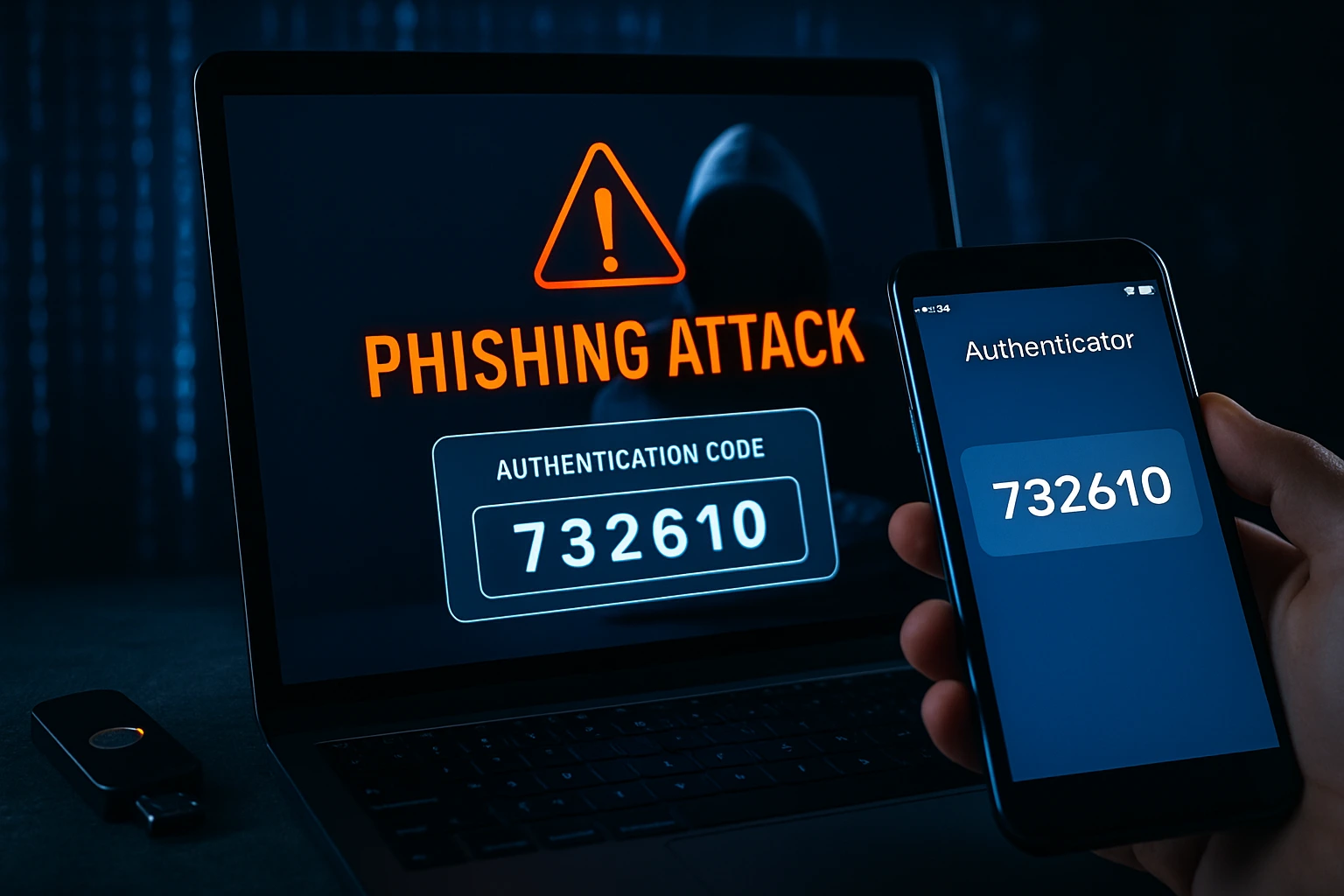Millions still rely on Multi-Factor Authentication (MFA) using text messages or authenticator apps. But these defenses are no longer enough. MFA phishing attacks are rising fast, showing how attackers can easily bypass weak security layers.
What once felt safe is now one of the weakest links in online protection.
How MFA Became a Target
First, security experts urged users to adopt SMS-based MFA.
Later, they warned: don’t use SMS—use authenticator apps instead.
It seemed like progress.
Authenticator apps avoid message interception, unlike SMS.
But they still fall short.
Phishing kits now capture real-time codes from authenticator apps.
Time-based codes can be phished, relayed, or stolen if the device is compromised.
The real problem?
The system doesn’t know if the request is legitimate—or from a fake site.
And attackers know it.
Real-World Breaches Prove the Risk
Recent breaches prove how easily MFA can be bypassed.
Victims included Aflac, Erie Insurance, and Philadelphia Insurance Companies.
Attackers used simple tricks:
- Phishing emails.
- Fake websites.
- Social engineering.
Victims entered usernames, passwords, and approved the fake request on their authenticator app.
Just like that, attackers gained full access.
The MFA phishing attack doesn’t break the system—it tricks the user.
The authenticator app cannot verify where the request originates.
The Hidden Dangers of SMS MFA Phishing Attacks
SMS-based MFA is even worse.
Text messages can be intercepted, redirected, or viewed by third parties.
Many tech giants, including Amazon and Google, still use third-party SMS delivery services.
Some of these companies have been linked to surveillance operations and security breaches.
Even the U.S. Cybersecurity and Infrastructure Security Agency (CISA) has warned:
“Do not use SMS as a second factor.”
Are Passkeys the Solution?
Passkeys are a step forward.
They cryptographically bind login credentials to websites, reducing human error.
But they’re not foolproof.
Passkeys are often stored in cloud accounts, which can be hijacked.
A compromised phone or account gives attackers access to stored passkeys.
Malware or coercion can still lead to approvals.
So while passkeys improve security, they’re not immune to MFA phishing attacks.
The Real Solution: Hardware-Based Biometric MFA
It’s time to move beyond codes, clouds, and user-dependent security.
Enter Token Ring and Token BioStick—hardware-based biometric authenticators.
These devices eliminate the weak points of traditional MFA.
They require:
- Physical presence.
- Fingerprint verification.
- Domain cryptographic validation.
- No code entry.
- No cloud storage.
Even if someone steals the device, it’s useless without the correct fingerprint.
Fake websites won’t trigger authentication.
Remote attacks fail automatically.
Why Hardware MFA Works Against Phishing
Hardware MFA cannot be phished in real time.
There are no one-time codes to steal.
The login process checks the domain cryptographically.
No match? No access.
Even malware on the device can’t force authentication.
The cryptographic handshake ensures that everything aligns.
This removes trust from the equation—replacing it with verifiable security.
Conclusion
MFA phishing attacks are here to stay.
Every day, attackers target users with fake sites and social engineering.
SMS is obsolete.
Authenticator apps are flawed.
Passkeys help but have risks.
Only dedicated hardware MFA with biometrics provides true phishing resistance.
Token Ring and Token BioStick set the new gold standard.
Attackers will come for your MFA.
The question isn’t if—it’s when.
Upgrade your security now—before you become the next headline.


0 responses to “MFA Phishing Attacks: Why Your Authentication Codes Can’t Be Trusted Anymore”